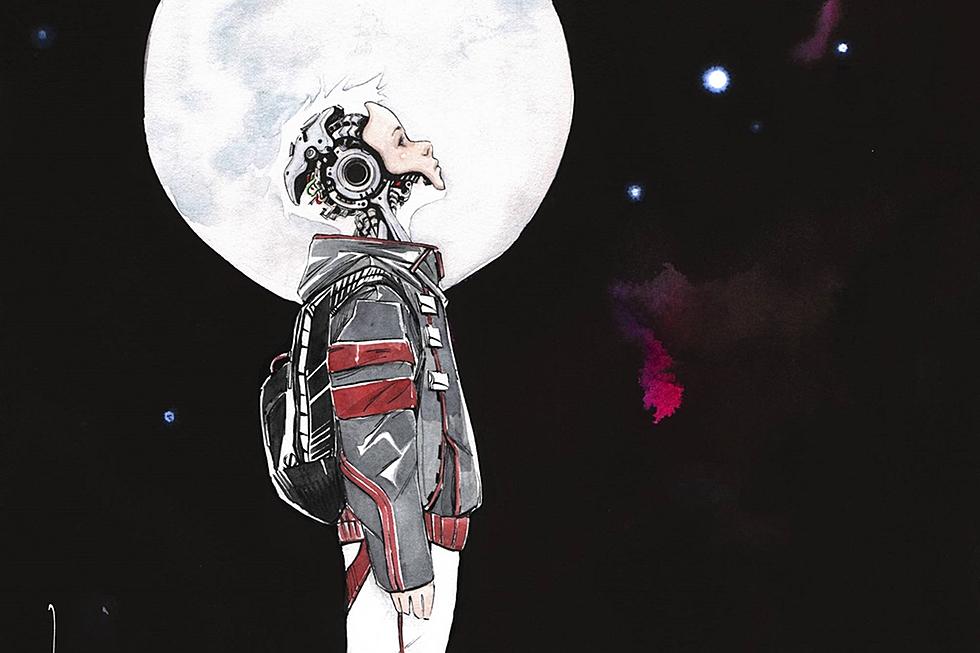![Weird Jobs, Broken Physics And The Inevitability Of Change In ‘Collider’ #1 [Review]](http://townsquare.media/site/622/files/2013/08/Collider-hed.jpg?w=980&q=75)
Weird Jobs, Broken Physics And The Inevitability Of Change In ‘Collider’ #1 [Review]
Collider #1 is an attractive package. And I say package because that's really what this feels like. The way comics work, or at least the way they should work, is with every piece -- script, art, color, and lettering -- working in sync, and when everything is right, you have a good story. Sometimes great visuals carry a mediocre script, and vice versa, but that's not ideal. In Collider, the newest Vertigo series, you have a comic that works: a script from Simon Oliver, art from Robbi Rodriguez, colors from Rico Renzi, letters from Steve Wands and a cover by Nathan Fox, melding together to tell a fun story about weird physics, dangerous jobs, and the inevitability of change.
Collider comes at an interesting time in the comic industry. We're in the midst of the reascension of sci-fi comics. Prophet and Saga are two of the most critically celebrated monthly titles currently being published. The Massive and The Manhattan Projects have been successful for Dark Horse and Image, respectively. Vertigo is currently in the middle of publishing the sci-fi/horror tale The Wake, and in the last two years they released Spaceman, from the team behind 100 Bullets, and Saucer Country, the under appreciated alien abduction/political series from Paul Cornell and Ryan Kelly.
Now comes Collider. Going in, I had an idea of what to expect. And if you've read Oliver's last Vertigo series, The Exterminators, you likely did too. On the surface, it's a quirky and fun tale that's weird for the sake of being weird, but there's more to it than that. The series stars Adam Hardy, an agent for the FBP -- Federal Bureau of Physics -- which is formed after a series of events that seemingly defy the laws of physics and put peoples lives in danger. Hardy and the FBP are the one's tasked with dealing with subsequent incidents. In this issue, it's a high school where the laws of gravity no longer apply, leaving students floating in mid-air (much to their delight), and the FBP is brought in to deal with the situation, attempting to repair the very fabric of the universe. Hardy's partners on the job, and in the series, are Special Agent Cicero Deluca, an emotionally detached genius who's also his boss, and Agent Jay Kelly, a reliable veteran and good friend to Hardy, who's hiding a secret.
The strength of the book lies in the full team collaboration. Nathan Fox's cover instantly sets a tone, the warm pink background illustrating that the series has a very modern feel, while leaving little doubt that every problem in the comic industry would be solved if all covers and characters were predominantly pink. The font used by Steve Wands is well-suited to Robbi Rodriguez's line. And Rico Renzi's color, like Fox's color for the cover, establishes tone; the blue for his skies and the pinks and reds emanating from the FBP's various equipment play off each other very well. It's a distinct pallete, but Renzi uses it in a way that enhances Rodriguez's line work without distracting from or overwhelming it.
And then there's Rodriguez's art. The industry is a little bit better for having him on a monthly title. In Collider, he's dealing with a series where gravity failures send teenagers into the sky and quantum tornadoes can destroy towns. He handles it all, with panel layouts that convey to the reader the disorienting experience of having the laws of physics suddenly break all around you. Oliver gives Rodriguez fun beats to draw, including Agent Hardy on the verge of being killed in some sort of gravitational vortex -- it's a really well put together scene. Oliver literally asks Rodriguez to offer his interpretation of what the rendering of space and time might look like. That's probably as daunting a task as it sounds, but you'd never know it from the finished product.
The issue isn't perfect, of course. The nature of what the FBP actually does when they arrive at these events isn't exactly clear. For now we just know that's it dangerous, and they get to wear and use very cool equipment, a decent tradeoff for being asked to fight quantum storms. Some scenes are given the space they need, while some others could have used more. Specifically, the very last panel. Rodriguez does a great job with the space he has, but you find yourself wishing it was a full page, to really illustrate the enormity of the event. There's a good chance that just wasn't possible, but I really wish it was.
But whatever minor problems there are don't get in the way of Collider being a very enjoyable first issue, with writing, art, and lettering all melding together for comics' latest sci-fi tale. Oliver has written a story that examines what things might be like if the laws of physics were no longer consistent. In the world of Collider, the basic laws of physics, like nearly everything else, are constantly changing and evolving, and it's presented in a way that makes it seem as inevitable as every constantly changing aspect of life. The people in the comic seem to take it relatively in stride, and that makes sense: whether it's a natural disaster, a famine, a drought, or some other major event, we always deal with it. We adapt and we evolve. It's inevitable.
Collider #1 is well worth the read. It's an impressive collaboration, a promising debut, and a very nice package.
More From ComicsAlliance

![Eat Nuts And Kick Butts: The ‘Unbeatable Squirrel Girl’ Mixtape [Music Week]](http://townsquare.media/site/622/files/2017/01/USG-Featured.png?w=980&q=75)

![There’s Nowhere To Hide In Williamson And Alexander’s ‘Frostbite’ #4 [Preview]](http://townsquare.media/site/622/files/2016/12/Frostbite-Featured.png?w=980&q=75)



![DC Unveils Covers And Solicitations For January’s ‘The Flash’, ‘The Hellblazer’ And ‘Batgirl’ [Exclusive]](http://townsquare.media/site/622/files/2016/10/DC-Jan-Feat.jpg?w=980&q=75)

